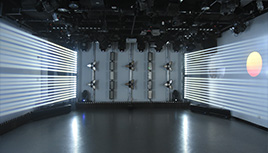Ensuring Compliance with International Standards in Stage Lighting: A Comprehensive Guide for Procur
2025-03-21 Post By: Longmangroup
As a seasoned procurement manager in the stage lighting industry, I’ve learned that compliance with international standards is non-negotiable when sourcing products from stage light manufacturers. Certifications like CE, UL, and RoHS are not just badges of honor—they are critical indicators of safety, quality, and environmental responsibility. Below, I’ll provide a detailed guide on how to verify compliance, including steps, key considerations, and product-specific insights for moving head lights, pixel bar lights, par lights, laser lights, profile lights, and more.Why Compliance Matters
Compliance ensures that products meet stringent safety, performance, and environmental standards. For example:
- CE Certification: Indicates conformity with European Union safety, health, and environmental requirements.
- UL Certification: Validates compliance with North American safety standards.
- RoHS Certification: Ensures the product is free from hazardous substances like lead and mercury.
Steps to Verify Compliance
- Request Certification Documents: Ask the stage light factory for official certificates and test reports.
- Check Certification Validity: Verify that the certifications are up-to-date and issued by accredited bodies.
- Inspect Product Labeling: Look for compliance marks (e.g., CE, UL, RoHS) on the product and packaging.
- Conduct Third-Party Testing: Hire an independent lab to test samples for compliance.
- Review Manufacturing Processes: Ensure the factory follows standardized procedures to maintain compliance.
Key Certifications and Their Importance
- CE Certification:
- Essential for products sold in the EU.
- Example: A pixel bar light with CE certification ensures it meets electromagnetic compatibility (EMC) and low voltage directives.
- UL Certification:
- Required for products sold in the US and Canada.
- Example: A par light with UL certification guarantees it has been tested for fire and electrical safety.
- RoHS Certification:
- Mandatory for electronics sold in the EU and many other regions.
- Example: A laser light with RoHS certification confirms it contains no hazardous materials.
- IP Rating:
- Indicates protection against dust and water ingress.
- Example: A profile light with an IP65 rating is suitable for outdoor use.
- ETL Certification:
- Similar to UL but often more cost-effective for manufacturers.
- Example: A moving head light with ETL certification meets North American safety standards.
Product-Specific Compliance Considerations
- Moving Head Lights:
- Verify motor and heat dissipation compliance to prevent overheating.
- Example: A CE-certified moving head light ensures safe operation in high-temperature environments.
- Pixel Bar Lights:
- Check for EMC compliance to avoid interference with other electronic devices.
- Example: A RoHS-certified pixel bar light ensures it is environmentally friendly.
- Par Lights:
- Ensure compliance with energy efficiency standards.
- Example: A UL-certified par light guarantees electrical safety for stage use.
- Laser Lights:
- Confirm compliance with laser safety standards (e.g., FDA for the US).
- Example: A CE-certified laser light ensures safe beam emissions for audience use.
- Profile Lights:
- Verify optical and electrical safety compliance.
- Example: A RoHS-certified profile light ensures it is free from hazardous substances.
Short-Term and Long-Term Challenges
- Short-Term:
- Documentation Delays: Manufacturers may take time to provide certificates. Solution: Request documents early in the procurement process.
- Cost of Compliance: Certified products may cost more. Solution: Highlight the long-term benefits of compliance to clients.
- Long-Term:
- Regulatory Changes: Standards may evolve, requiring recertification. Solution: Partner with manufacturers that stay updated on regulatory changes.
- Counterfeit Certificates: Some suppliers may provide fake documents. Solution: Verify certificates directly with issuing bodies.
Cost vs. Compliance
While compliant products may have higher upfront costs, they offer long-term value by reducing risks and ensuring market access. For example, a LED stage light with CE and RoHS certifications may cost 10% more but avoids potential fines and recalls.
Market Competition
Compliance is a key differentiator in the competitive stage lighting market. Stage light manufacturers that prioritize certifications are more likely to win contracts with global clients. By ensuring compliance, you can position your company as a trusted partner in the industry.
Ensuring compliance with international standards is essential for sourcing safe, high-quality stage lighting products. By verifying certifications like CE, UL, and RoHS, and understanding their importance for products like moving head lights, pixel bar lights, and profile lights, you can mitigate risks and deliver value to your clients. Always prioritize compliance over cost savings, and partner with LED stage light factories that demonstrate a commitment to quality and safety. This approach not only protects your business but also enhances your reputation in the global market.














